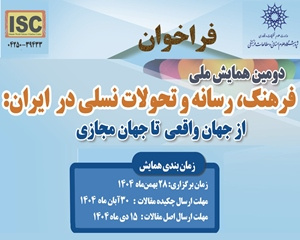پروژه آناتولی جنوب شرقی در بستر بحران هویت ملی ترکیه (مقاله علمی وزارت علوم)
درجه علمی: نشریه علمی (وزارت علوم)
آرشیو
چکیده
پروژه آناتولی جنوب شرقی(گاپ) ترکیه، یکی از بحث برانگیزترین و بزرگترین پروژه های موجود در سراسر جهان است که محل اجرای پروژه مناطق کردنشین ترکیه است. هدف عمده پروژه ساخت22 سد، 19 نیروگاه برق بر روی رودخانه های دجله و فرات به همراه توسعه شبکه های آبیاری برای تولید انرژی و آبیاری 8/1 میلیون هکتار زمین اعلام شده است. بسیاری از محققان اجرای پروژه را در راستای حل مسئله کردی در ترکیه می دانند. سوال این است پروژه گاپ چه تأثیری بر بحران هویت و هویت کردها در ترکیه داشته است؟ پاسخ به این پرسش در قالب فرضیه پژوهش این خواهد بود که سیاست های آبی ترکیه در قالب پروژه گاپ بخشی از استراتژی ترکیه برای حل بحران هویت واز بین بردن هویت کردی در این کشور است. یافته های پژوهش با استفاده از روش تحلیلی – توصیفی و نظریه بحران لوئیس پای حاکی از آن بوده که ترکیه از ابتدای تأسیس با بحران هویت مواجه و با استفاده از پروژه گاپ و روش های همگون سازی ناشی از آن مانند کوچ اجباری مردم کرد منطقه گاپ، تخریب آثار باستانی و نشانه های فرهنگ و هویت کردی و بهبود شرایط اقتصادی – اجتماعی جامعه کردی به دنبال حل بحران هویت است اما پروژه گاپ نتوانسته بحران هویت و مسئله کردی در ترکیه را حل کند و پیامدهای از قبیل جابجایی جمعیت، تخریب محیط زیست و تخریب میراث فرهنگی کردها را به همراه داشته است. همچنین این پروژه نقض ماده اول اعلامیه حقوق بشر، مواد 29،27و26 قطعنامه رعایت جوامع بومی و کنوانسیون مبارزه با بیابان زایی است.The Southeastern Anatolia Project (GAP) and Identity Crisis of Kurds in Turkey
The Southeastern Anatolia Project is one of the largest projects in the world which is sited in the Kurdish regions of Turkey. The major goal of GAP is to build 22 damps, 19 power plants on the Tigris and Euphrates rivers, along with the development of irrigation systems to produce energy and irrigate 1.8 million hectares of land. The main question we like to address in this study is: what's the effect of GAP on the identity crisis of kurds in Turkey? The paper hypothesizes that Turkey's water policies being implemented in GAP are a part of Turkey’s strategies to extirpate the Kurdish identity of Kurds in Turkey . Our findings using analytical-descriptive method and Lewis's identity crisis theory suggest that since the beginning, Turkey has faced an identity crisis and the Turkey government is trying to solve the identity crisis using GAP and the resulting replication methods including forced migration of Kurdish people of the region, destruction of antiquities and symbols of Kurdish culture and identity and improving the socio-economic conditions of the Kurdish community. The GAP was not able to solve the Kurdish identity crisis in Turkey and conversely, there have been some consequences such as population resettlement, environmental degradation, and the destruction of Kurdish cultural heritage. the project violates article 1 of the Universal Declaration of Human Rights, articles 29, 27, and 26 of theUnited Nation’sResolution on the Elimination of all Forms of Discrimination against Indigenous People, as well as the United Nation’s Convention to Combat Desertification.







